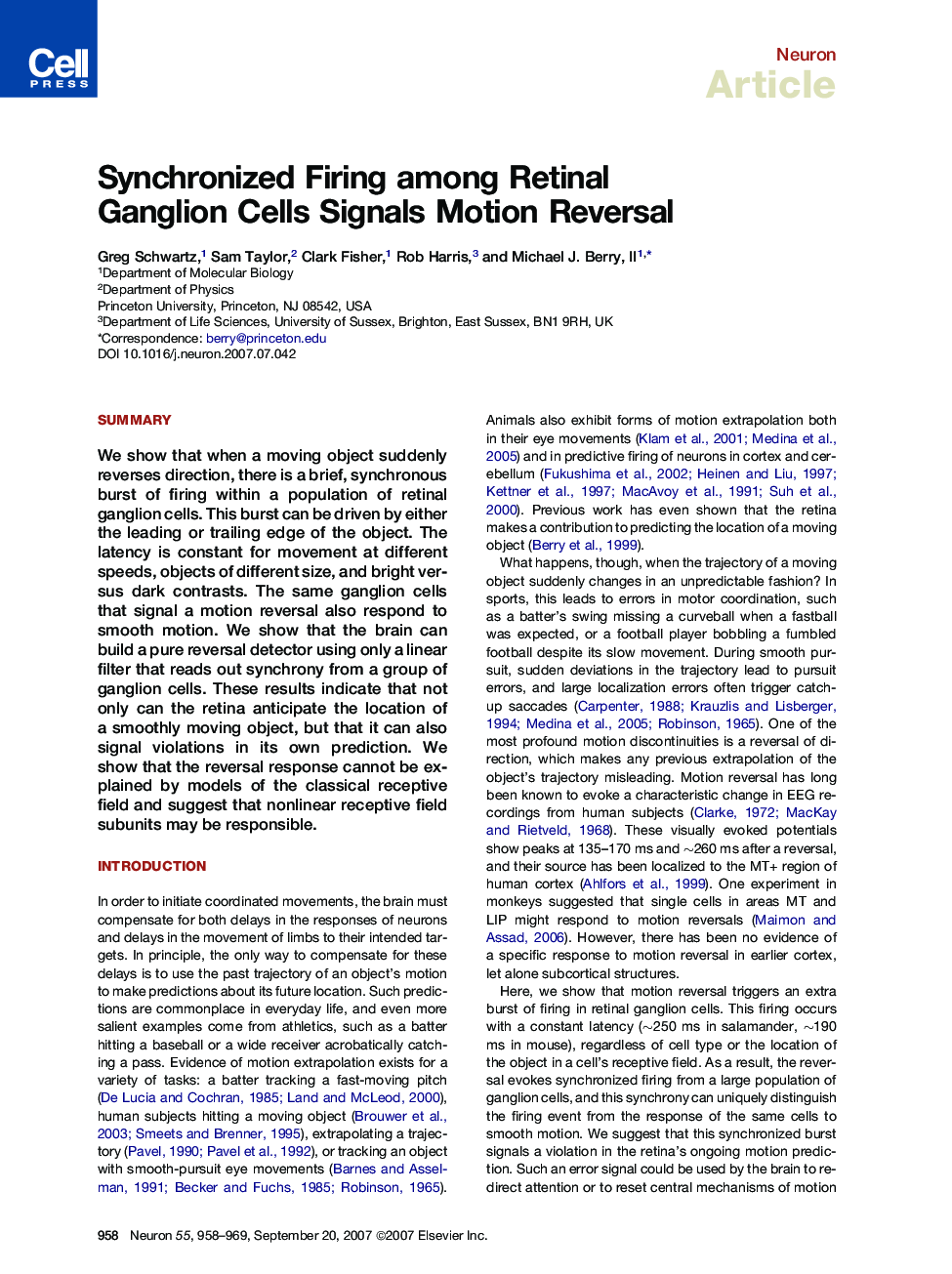| Article ID | Journal | Published Year | Pages | File Type |
|---|---|---|---|---|
| 4322694 | Neuron | 2007 | 12 Pages |
SummaryWe show that when a moving object suddenly reverses direction, there is a brief, synchronous burst of firing within a population of retinal ganglion cells. This burst can be driven by either the leading or trailing edge of the object. The latency is constant for movement at different speeds, objects of different size, and bright versus dark contrasts. The same ganglion cells that signal a motion reversal also respond to smooth motion. We show that the brain can build a pure reversal detector using only a linear filter that reads out synchrony from a group of ganglion cells. These results indicate that not only can the retina anticipate the location of a smoothly moving object, but that it can also signal violations in its own prediction. We show that the reversal response cannot be explained by models of the classical receptive field and suggest that nonlinear receptive field subunits may be responsible.
